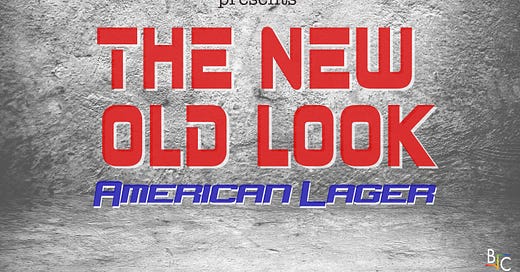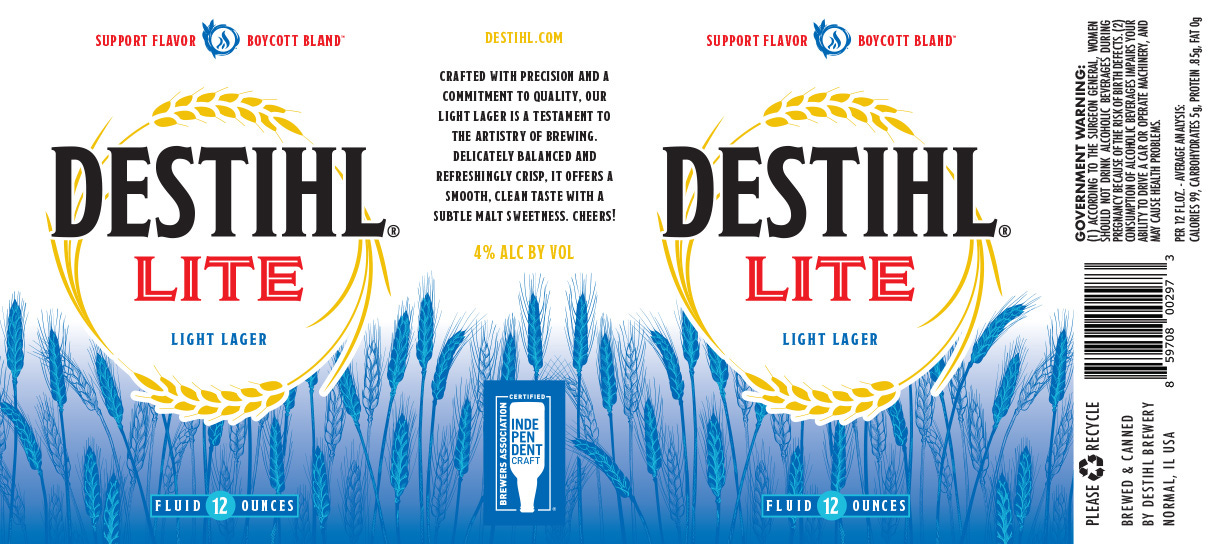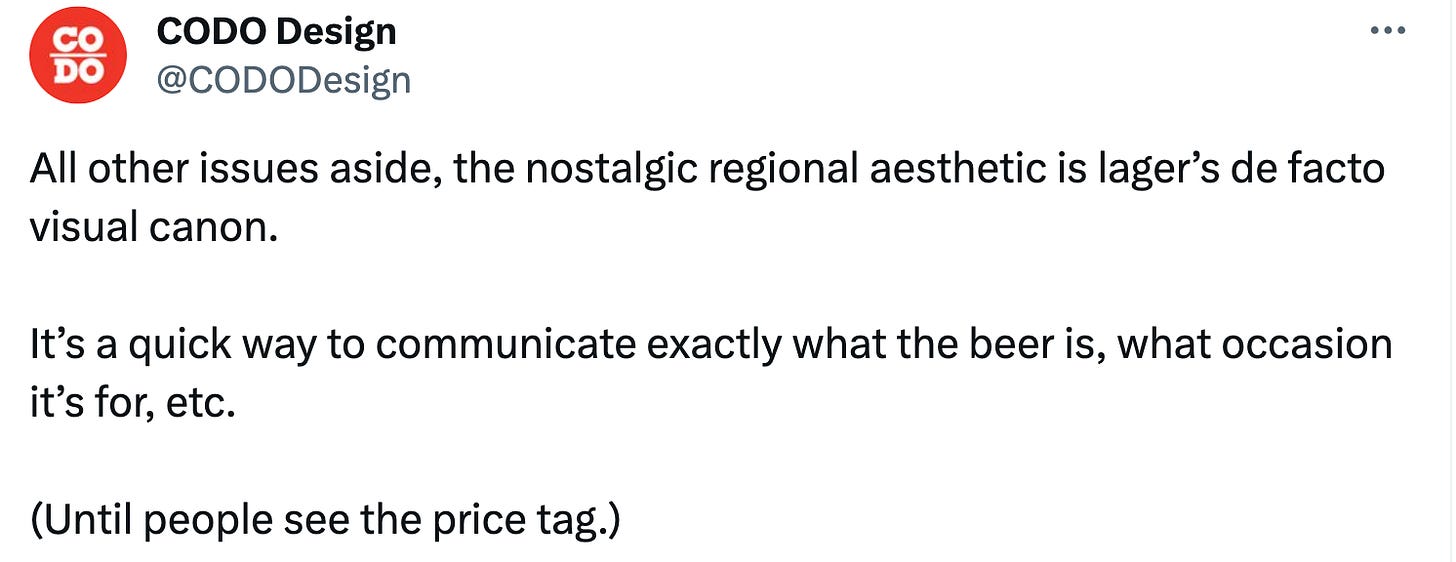More breweries than ever are developing a singular, premium American Lager brand. The style ranked #15 among craft micro-styles in 2023, growing 10% in an otherwise sea of red. Credit whatever you want from IPA-fatigue, to Bud Light fallout, to the natural evolution of a craft beer drinker. Regardless, Lager’s fresh momentum is poised to continue in 2024 with many more new additions entering the mix. Having helped develop one of these new brands over the last year 18 months, I found the process of creating the packaging full of fascinating decision points that inform the brewery’s intentions and could determine the brands staying power. Let’s take a look at two of my favorites so far and how they went about it.
Back in December 2022, I shared the following topic in my 2023 Craft Beer Preview to keep your eye out for:
I intentionally didn’t label this a “prediction” because the flood gates had already begun. Instead, I wanted too make sure this category was at least on everyone’s watchlist. Cincinnati, OH has emerged as a town with at least two great case studies seeing strong results out of the gate. The first is Garage Beer, which originated out of Braxton Brewing, but was spun-off to CPG veteran Andy Sauer and began marching across Indiana, into Illinois, all the way to my local Trader Joe’s here in the city of Chicago. The second is Rhinegeist’s Cincy Light, which included a Name Image & Likeness (NIL) partnership linked to University of Cincinnati athletics as a spring board for adoption.
At this point, data isn’t very useful since these brands are just getting started and there aren’t full prior years of sales to compare to. Anecdotally however, I have beer distributors in my DMs regularly telling me how Garage Beer is flying, especially outside of cities where spending time in one’s garage is much more common.
For Cincy Light, a recent paywalled article in the Cincinnati Business Journal, amplified by a Craft Business Daily feature, called the beer “lightning in a can” and their CEO Adam Bankovich called it a “Rocketship” 🚀 while crediting its Summer 2023 launch with fueling Rhinegeist’s finish to the year, up 3.5% overall. When looking at these two packages, you can feel the similarities in methodology despite being well-differentiated, while also noticing decision points where they went in opposite directions:
Modern-Throwback Feel: Both designs feel very clean and simple, two qualities that I associate as much with modern as I do classic. The fonts however have a tasteful, throwback vibe that pays homage to the style’s history, while distancing from IPA aesthetics that dominates the craft shelves.
Not Afraid of Light: Both brands have “craft beer” roots, though neither is afraid to embrace the word “Light”. Cincy Light pulls it into the brand name itself, despite not having a non-light version. Garage Beer goes one notch down in priority by using it in smaller font as part of the style name: “Classic Light Beer”. This is a spot where a lot of breweries go with Premium instead of Classic, but I like the differentiation especially in connection to the garage where a classic car would be stored.
Lager Vs. Beer: Rhingeist calls Cincy Light a Lager, where as Garage Beer is a Beer both in the brand name and style name. This could come down to simplicity given the fact that the brand name Garage Beer is named after a known occasion that already happens to contain the word Beer. There are definitely audiences who do not view the term Lager as a premium style as well.
When developing Cold Time at Revolution, we ran the terms Lager and Beer through the ringer by weighing the pro’s & con’s, and the positive vs. negative associations of each. As a fan of logic, I felt that since our brand name references the extended cold-aging time needed to make a great lager, which is not as true of all beer styles, that Lager was a no brainer for our situation.
Calorie Count: Both brands call out the calorie count, which is pretty directly tied to ABV %. Cincy Light clocks in at 4.2%, which translates to 110 calories. By hitting a lower target of 4.0%, Garage Beer is able to slide into the two-digit realm, proudly displaying 95 calories. Non-light lagers reaching ABVs of 4.7%-5.0% are much less likely to use the calorie count as a selling point.
Lager Vs. Premium Lager: Not applicable to Garage Beer, but notice that Cincy Light just calls itself a Lager and not a Premium Lager. While not an actual written rule of course, should the use of "Light” preclude you from the term “Premium”? Should Premium be saved for the non-light lagers like Cold Time that tend to push toward 4.7-5.0% ABV? Or is Rhinegeist wise to just save their Premium Lager card for a brand that will travel outside of Cincy to their wider footprint? On that note…
Local vs. Wide: It’s worth pointing out that regardless of the success of Cincy Light, inclusion of the city name gives them a strong local pride, but likely limits the beer’s reach to their home market. Garage Beer on the other hand just happens to originate in Cincy, but has a brand name that can travel nationwide.
Craft vs. Small Batch: Rhinegeist doesn’t use the term “craft" on their Cincy Light packaging, but they do use the Brewers Association’s Craft Brewers seal and embrace the term in telling their broader story. Garage Beer, which exited the Braxton Brewing architecture, was given a fresh start and updated design with no real history or other other continuity to factor in. They went with the phrase “Small Batch Brewed” which makes sense as a way to distance themselves from a powerhouse brand like Modelo, which sells at a similar price.
For comparison, here’s how Cold Time looks if you haven’t seen it. We all apparently love our font going at an upward angle to the right 😆
shared another example from Illinois’ Destihl Brewing which uses both LITE and LIGHT lager, a more traditional throw-back look of its own, multiple references to “craft”, and calls their consumers to support flavor and boycott bland.Not all brewers are instant fans of the look behind all these new lager brands. Jenny Pfäfflin is an outspoken leader behind the craft lager movement and plays a unique role with her involvement in both brewing AND marketing at Chicago’s beloved Dovetail Brewing. While not specifically referring to any of the above mentioned brands, she cast a tweet last week that I found to be a clever comparison, even if a little cynical:
This got me thinking about the look & feel of these new, old-look lager brands, including those that straddle the line between modern and throwback. What I’ve noticed in my own experience is that the can has the ability to make the drinker feel good, before they even taste it. A simple classic design helps allude back to the good old days, but in a deeper way than a Fruit Loop-themed IPA with a zombie Toucan Sam on the label.
The retro feel has also become a tradition with the American Lager style, kind of like the label of a Bock typically containing a goat. While far from mandatory, embracing this aesthetic makes communicating the lager style more intuitive and obvious to prospective consumers. It’s up to the brewery to pull it off in an authentic manner that feels genuine to their brand, while evoking that positive feeling from their customer. While I am in favor of this path of least resistance, I find both sides of the debate fascinating for anyone heading down this path.
Here’s takes from both sides of the retro lager aisle:



















We at Saint Arnold released Grand Prize a few weeks ago, which is a throw back to a Howard Hughes owned brewery and Grand Prize was once the best selling beer in Texas. Feedback from both wholesalers and customers has been great but we've definitely heard the "why pay craft/premium price for low ABV light beer" comments too. We haven't tried the volume pricing play yet though and will be a little slow to adapt that. Are the other mentioned at more traditional craft price points?
One other thing to note about that Destihl label (thanks for mentioning, Doug) -- I had a couple people reach out to mention that the spelling of "Lite" is trademarked by Miller, which protects those marks pretty aggressively. The use of "Light" is stil fair game, on the other hand.